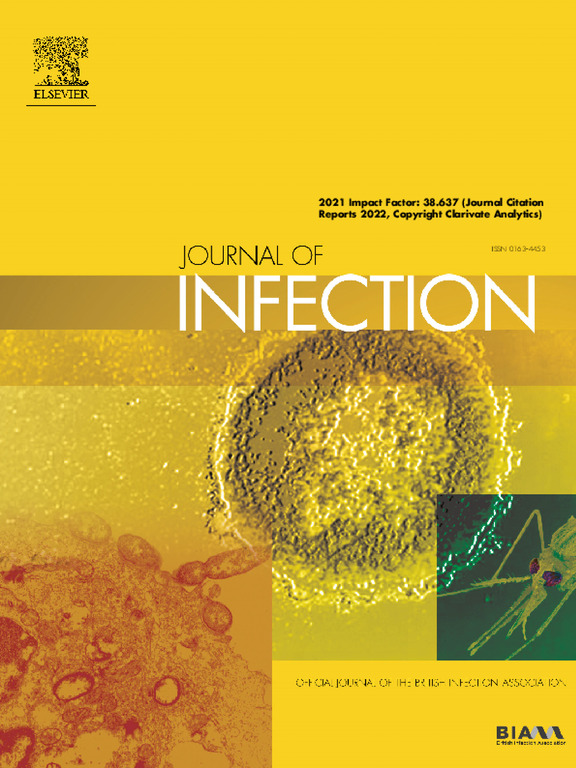Trends in hospitalisations for lower respiratory infections after the COVID-19 pandemic in France
IF 14.3
1区 医学
Q1 INFECTIOUS DISEASES
引用次数: 0
Abstract
Objectives
We aimed to evaluate the impact of the pandemic and post-pandemic periods on hospital admissions for LRTI, with a focus on patients with chronic respiratory disease (CRD).
Methods
From July 2013 to June 2023, monthly numbers of adult hospitalisations for LRTI (excluding SARS-CoV-2) were extracted from the French National Hospital Discharge Database. They were modelled by regressions with autocorrelated errors. Three periods were defined: (1) early pandemic and successive lockdowns; (2) gradual lifting of restrictions and widespread SARS-CoV-2 vaccination; (3) withdrawal of restriction measures.
Results
Pre-pandemic incidence was 96 (90.5 to 101.5) per 100,000 population. Compared with the pre-pandemic period, no more seasonality and significant reductions were estimated in the first two periods: −43.64% (−50.11 to −37.17) and −32.97% (−39.88 to −26.05), respectively. A rebound with a positive trend and a seasonal pattern was observed in period 3. Similar results were observed for CRD patients with no significant difference with pre-pandemic levels in the last period (−9.21%; −20.9% to 1.67%), albeit with differential changes according to the type of CRD.
Conclusions
COVID-19 pandemic containment measures contributed to changes in LRTI incidence, with a rapid increase and return to a seasonal pattern after their lifting, particularly in patients with CRD.
法国 COVID-19 大流行后因下呼吸道感染住院的趋势。
目的我们的目的是评估大流行期间和大流行后对 LRTI 住院人数的影响,重点是慢性呼吸道疾病(CRD)患者:从 2013 年 7 月到 2023 年 6 月,每月因 LRTI(不包括 SARS-CoV-2)住院的成人人数均来自法国国家医院出院数据库。通过自相关误差回归法建立模型。研究界定了三个时期:(1) 大流行初期和连续封锁期;(2) 逐步取消限制和广泛接种 SARS-CoV-2 疫苗期;(3) 取消限制措施期:大流行前的发病率为每 10 万人 96 例(90.5 至 101.5 例)。与疫情流行前相比,前两个时期的发病率不再具有季节性,且有明显下降:分别为-43.64%(-50.11 至-37.17)和-32.97%(-39.88 至-26.05)。在第 3 个阶段,观察到呈正趋势的反弹和季节性模式。CRD患者也出现了类似的结果,在最后一个时期与大流行前的水平没有明显差异(-9.21%;-20.9%至1.67%),尽管根据CRD类型的不同而出现不同的变化:COVID-19大流行遏制措施促进了LRTI发病率的变化,在这些措施解除后,LRTI发病率迅速上升并恢复到季节性模式,尤其是在CRD患者中。
本文章由计算机程序翻译,如有差异,请以英文原文为准。
求助全文
约1分钟内获得全文
求助全文
来源期刊

Journal of Infection
医学-传染病学
CiteScore
45.90
自引率
3.20%
发文量
475
审稿时长
16 days
期刊介绍:
The Journal of Infection publishes original papers on all aspects of infection - clinical, microbiological and epidemiological. The Journal seeks to bring together knowledge from all specialties involved in infection research and clinical practice, and present the best work in the ever-changing field of infection.
Each issue brings you Editorials that describe current or controversial topics of interest, high quality Reviews to keep you in touch with the latest developments in specific fields of interest, an Epidemiology section reporting studies in the hospital and the general community, and a lively correspondence section.
 求助内容:
求助内容: 应助结果提醒方式:
应助结果提醒方式:


